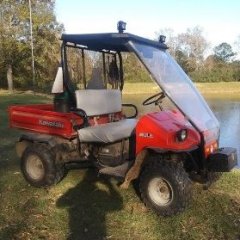Ol' Reliable ain't charging
-
Similar Topics
-
By Homeowner A
I was randomly and briefly able to connect to my Coleman UTV 400s ECU the other day twice and haven't been able to since. When I was able to access it, I found the following codes and wondered if anyone may know where I should start or what I should look at?
P0031 - O2 Sensor Heater Control Voltage Low
P0107 - Manifold Absolute Pressure/Barometer Pressure Voltage Low
P0113 - Intake Air Temperature Sensor Voltage High
P0118 - Engine Coolant Temperature Sensor Voltage High
P0650 - Malfunction Indicator Lamp (MIL) failure
-
By Gorj
I am going to replace the batteries in my E1. I am not interested in the high cost Lithium or the expensive 6 volt dry batteries. I am considering four 12 volt deep charge marine batteries. I have a source for 810 amp units for about $100 each. I have no worries about reprograming the charger because it went out a few years ago and I replaced it with generic golf cart charger. When I decide to do this, I'll keep you posted on the results.
-
By Alien10
I'm thinking of buying a snow blade for my Coleman Outfitter 550 (Hisun with Coleman stickers).
Has anyone purchased a snow blade that can offer the make and model they bought and any comments, pros cons etc.?
Not 100% sure I'm going to buy, as the selection of blades for this model seems a bit thin on line.
Thoughts and comments welcomed.
Thanks in advance.
-
By A P
Hi
I have a 2022 hisun sector eps 550. 30amp fuse is blown for eps. Checked the motor and it’s fine. Opened up the controller and found a bad diode. Dealer wanted 500$ for the controller. Just posting this in case it helps someone. I couldn’t read numbers from the old one so just took a guess and replaced it with a 100v 3amp diode.
-
-
By Adrian Domingues
I have 31 miles on my new T-Boss 550. In order to start I put in nentural and the emerage brake on and push down on brake paddle, then trun ket and get nothing, with key still on I shift to reverase and the back to netural and it starts. Anyone know what is happening.
Thanks for your help
-










Recommended Posts
Join the conversation
You can post now and register later. If you have an account, sign in now to post with your account.
Note: Your post will require moderator approval before it will be visible.